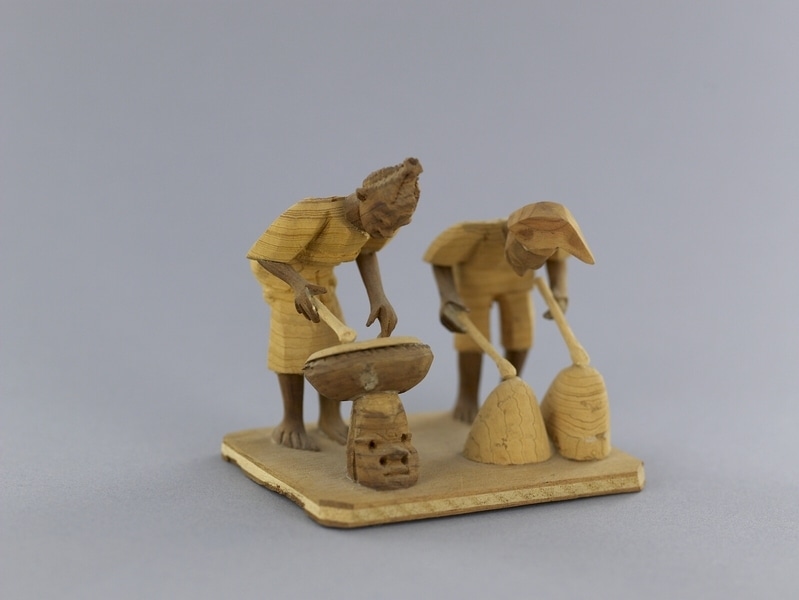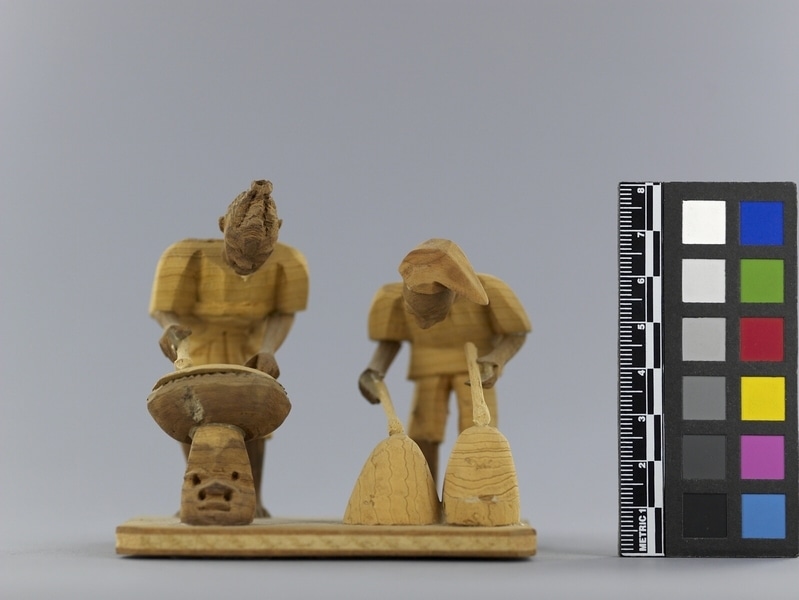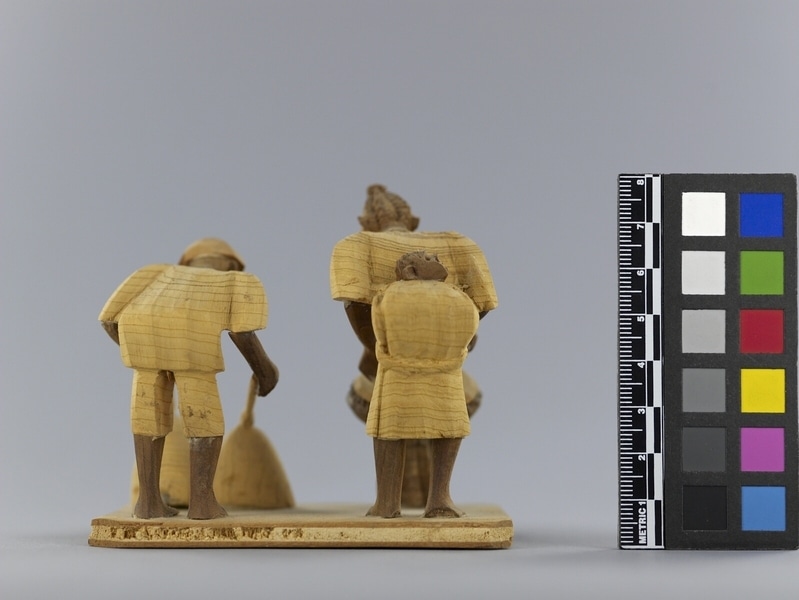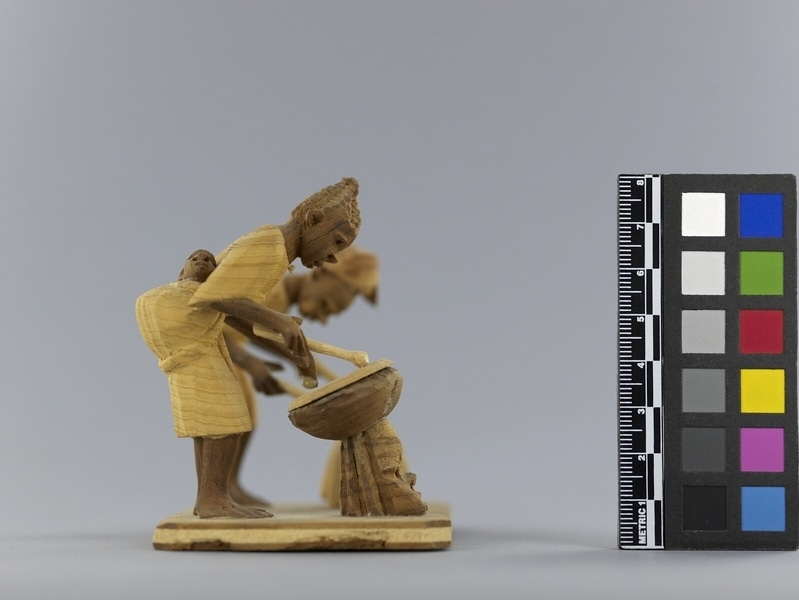Thorn Carving Item Number: Af402 from the MOA: University of British Columbia




Description
Two figures representing a man and a woman. The man has bare feet, short pants, shirt, and pointed cap while holding a drumstick in each hand which touches the top of two conical drums with wide bases resting on the floor. Beside him, there is a woman with bare feet, a bare head, and a short dress. She is carrying a baby low on her back, and in her right hand she is holding a drumstick which touches a flat single membrane, basin-shaped drum which rests on the floor and has a carved human face on the front. Clothes, two drums, drum membrane, and sticks are light yellow-brown. The cap is light red-brown. Drum base, figures' limbs, and heads are dark brown. On a wood base.
History Of Use
Thorn carvings are miniatures depicting scenes from Nigerian life. This type of carving began circa 1930. Thorns are carved by men and vary in size. They can be as large as 12.7 cm long and 9.6 cm wide. They are comparatively soft and easily carved.
Cultural Context
craft; tourist art
Specific Techniques
The light yellow-brown thorn and the dark brown thorn come from the ata tree; the light red-brown thorn comes from egun trees. The parts are glued together with viscous paste made from rice cooked with water.
Narrative
This thorn carving was made specifically for the donors by the artist.
Item History
- Made in Nigeria before 1972
- Collected during 1972
- Owned by Andrew Stewart and Jessie Stewart before February 8, 1980
- Received from Andrew Stewart (Donor) and Jessie Stewart (Donor) on February 8, 1980
What
- Name
- Thorn Carving
- Identification Number
- Af402
- Type of Item
- carving
- Material
- egun thorn, atum thorn, rice adhesive and wood
- Manufacturing Technique
- carved and glued
- Overall
- height 8.8 cm, width 9.0 cm, depth 6.5 cm
Who
- Culture
- Yoruba
- Previous Owner
- Andrew Stewart and Jessie Stewart
- Received from
- Andrew Stewart (Donor) and Jessie Stewart (Donor)
Where
- Holding Institution
- MOA: University of British Columbia
- Made in
- Nigeria
When
- Creation Date
- before 1972
- Collection Date
- during 1972
- Ownership Date
- before February 8, 1980
- Acquisition Date
- on February 8, 1980
Other
- Item Classes
- carvings & sculpture
- Condition
- good
- Accession Number
- 0590/0088